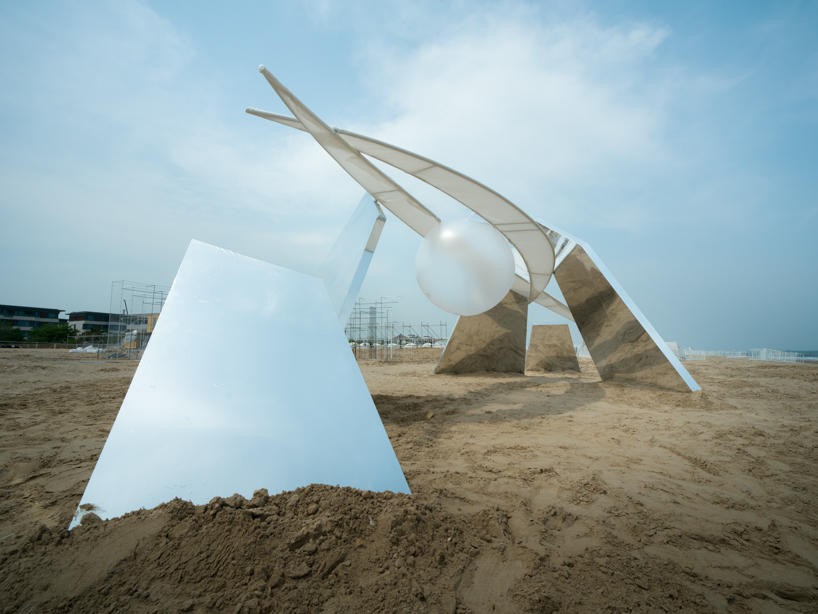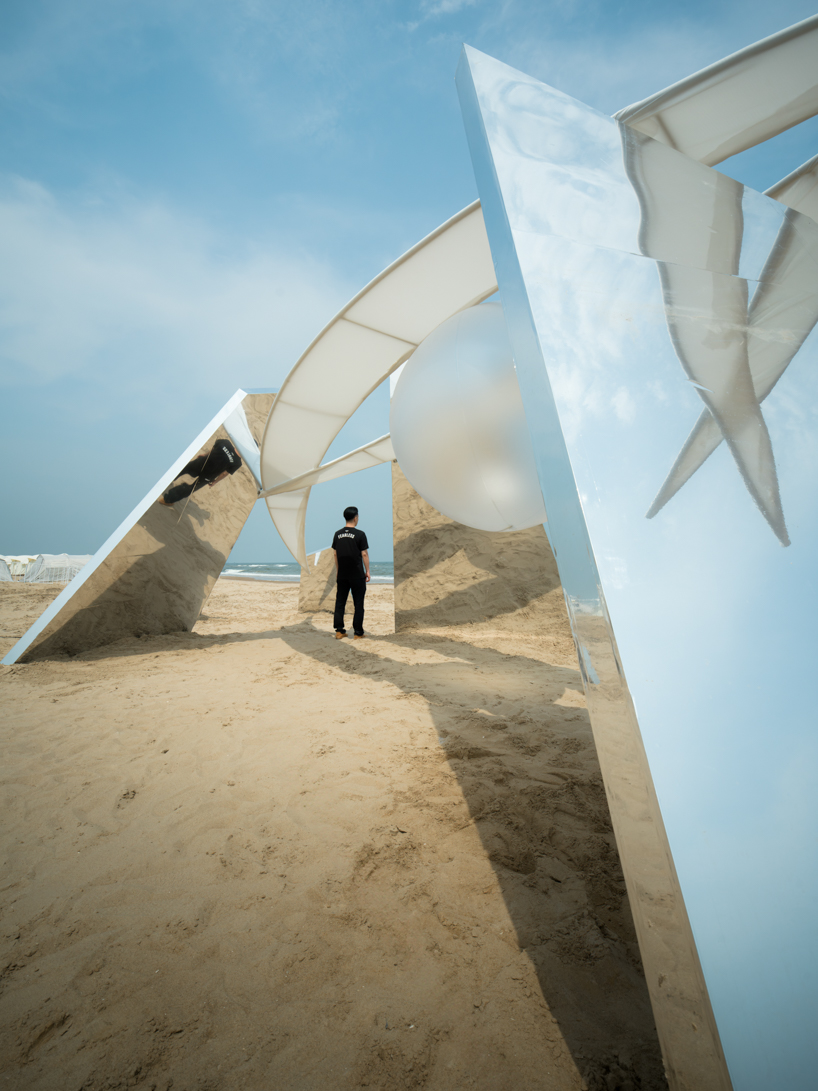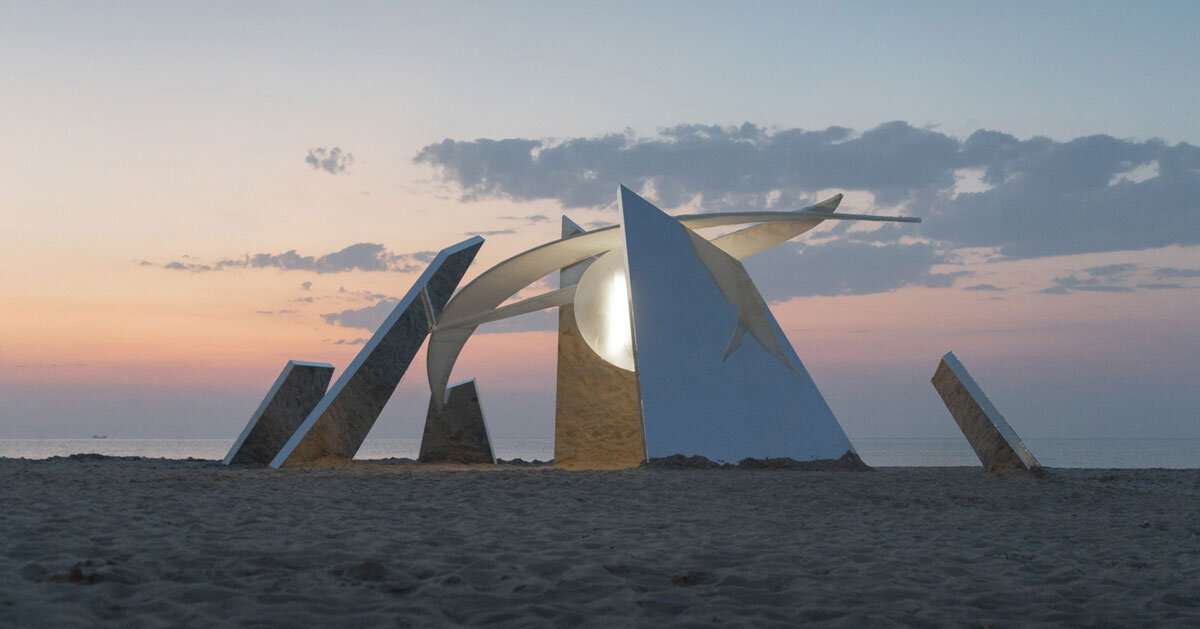Zhide Architectural Design draws on the image of a bird in flight
Installed on the beach at Anaya, OAS/S-NEST is an architectural art installation designed by Zhide Architectural Design as part of the public art initiative ‘Migratory Bird 300.’ The piece is conceived as a temporary seaside theater stage for the 2025 Anaya Drama Festival in Hebei Province, China, with the theme of ‘Sensibility and Sense.’ The work forms part of the recurring OAS/S spatial program, along with OAS/S-NOMAD installation, that links site-specific design with broader themes of movement, return, and cyclical creation.
The structure takes its formal inspiration from the image of a bird in flight, employing this reference as a diagram for spatial composition and programmatic layering. The upper portion consists of two suspended white elements framing a central illuminated sphere, which functions as both a focal point and a symbolic ‘core’ of the installation. These components are elevated above ground and appear to float, using lightweight materials to reduce structural weight and visual mass. Beneath this elevated frame is a dense arrangement of geometric mirrored volumes partially embedded in the beach surface. This base, described by the architects as the ‘nest’ structure, is constructed from a modular system of reflective blocks that visually absorb and refract the surrounding environment. The mirrored surfaces allow the installation to reflect light, color, and movement throughout the day, generating a responsive interface between the built form and the changing beach context.

the structure serves as a temporary seaside theater stage | image by 魏溦Wei Wei
OAS/S-NEST installation acts as a temporary seaside theater stage
The project by Zhide Architectural Design Studio uses a combination of lightweight, modular materials that support ease of transport, reassembly, and reuse. This modularity reflects the project’s emphasis on adaptability and its alignment with sustainable construction practices. The installation can be disassembled and relocated, extending its utility beyond the festival while minimizing environmental impact.
Spatially, the upper structure introduces an element of elevation and lightness, in contrast to the grounded, angular composition below. Together, these two components form a dual system, visually referencing symbolic notions of emotion and logic, or movement and grounding. A curved plan geometry and the placement of the central sphere define a visual focal point referred to as the ‘drama eye,’ which is further activated through night-time lighting and projection. This ‘eye’ functions as both a visual anchor and a metaphorical interface between audience and installation, emphasizing the work’s role as both a scenic backdrop and a participatory environment. The surrounding beach acts as both stage and public space, inviting viewers to move through, around, and within the structure. The material strategy further engages with environmental context. The mirrored surfaces capture variations in sky, sea, and human activity, producing an ephemeral skin that evolves throughout the exhibition period. Shadows cast by the structure shift over the course of the day, reinforcing the installation’s temporal relationship to its site.

mirrored geometric volumes create a grounded, reflective base | image by 魏溦Wei Wei

a central illuminated sphere functions as the installation’s visual core | image by Zhide Architectural Design

